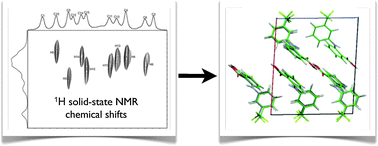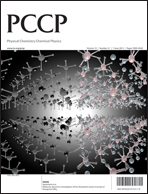A protocol for the ab initio crystal structure determination of powdered solids at natural isotopic abundance by combining solid-state NMR spectroscopy, crystal structure prediction, and DFT chemical shift calculations was evaluated to determine the crystal structures of four small drug molecules: cocaine, flutamide, flufenamic acid, and theophylline. For cocaine, flutamide and flufenamic acid, we find that the assigned 1H isotropic chemical shifts provide sufficient discrimination to determine the correct structures from a set of predicted structures using the root-mean-square deviation (rmsd) between experimentally determined and calculated chemical shifts. In most cases unassigned shifts could not be used to determine the structures. This method requires no prior knowledge of the crystal structure, and was used to determine the correct crystal structure to within an atomic rmsd of less than 0.12 Å with respect to the known reference structure. For theophylline, the NMR spectra are too simple to allow for unambiguous structure selection.

You have access to this article
 Please wait while we load your content...
Something went wrong. Try again?
Please wait while we load your content...
Something went wrong. Try again?


 Please wait while we load your content...
Please wait while we load your content...